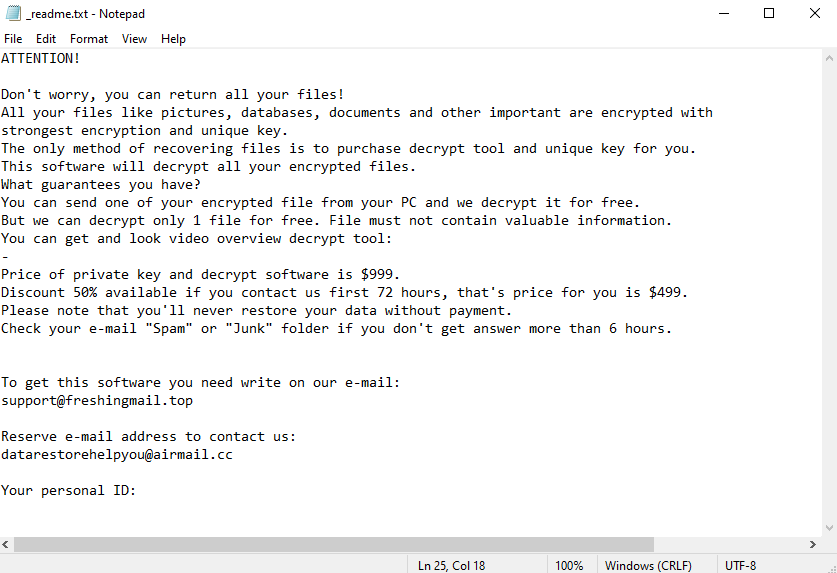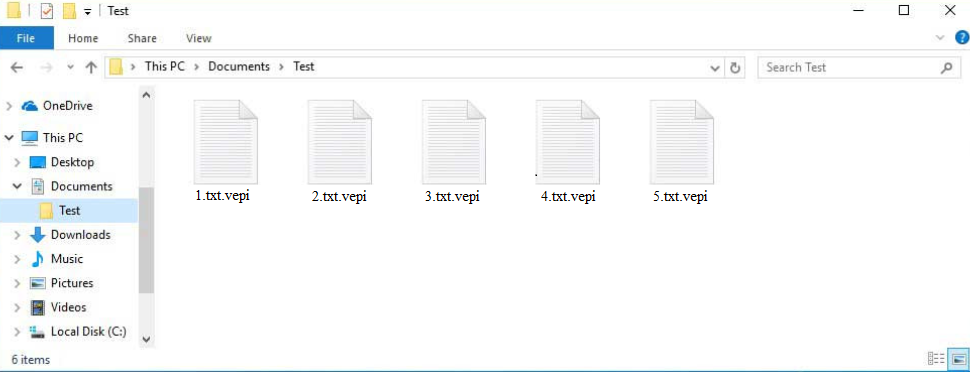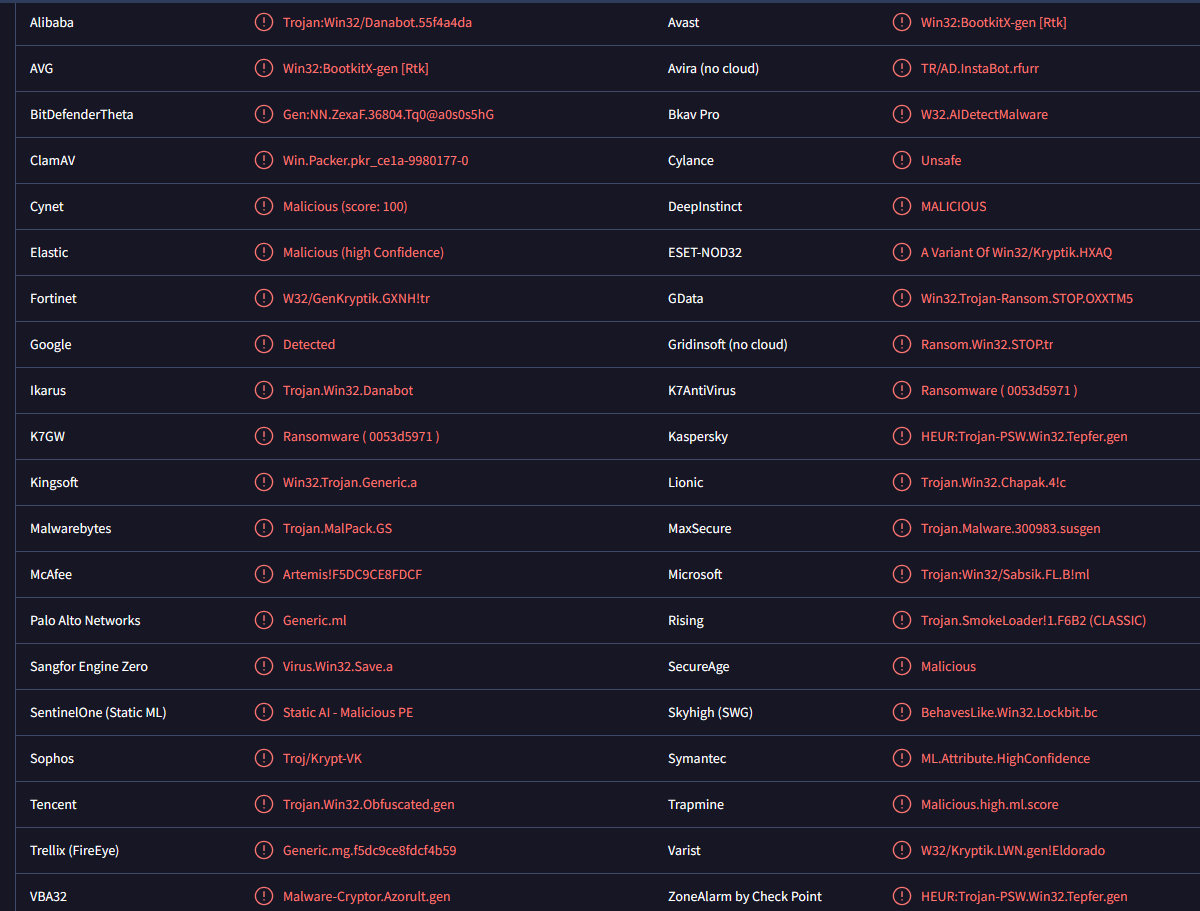How to remove Vepi ransomware
Vepi ransomware is file-encrypting malware from the Djvu/STOP ransomware family. It’s a dangerous infection that targets personal files and takes them hostage by encrypting them. This ransomware is part of the Djvu/STOP malware family. The cybercriminals operating this malware family release new versions regularly. Unfortunately, file recovery is not always possible.
Like all ransomware infections, Vepi ransomware targets personal files. That includes photos, images, videos, documents, etc. Encrypted will be easy to identify because the names will have the .vepi extension added to them. For example, an encrypted 1.txt file would become 1.txt.vepi when encrypted. Unfortunately, you will not be able to open any encrypted files unless you first use a decryptor for them. However, getting a decryptor will not be easy.
Vepi ransomware drops a _readme.txt ransom note. The note explains how victims can get a decryptor, and it involves paying the ransom. According to the note, victims can buy a Vepi ransomware decryptor for $999. There’s supposedly a 50% discount for victims who make contact within the first 72 hours. The malware operators also promise to decrypt one file for free as proof that they have a decryptor. However, the file cannot contain important information.
Paying the ransom is never recommended for several reasons. Firstly, paying the ransom will not necessarily lead to a decryptor. Malware operators are cybercriminals, and nothing can force them to keep their end of the deal. It has, unfortunately, happened in the past with many ransomware operators. Furthermore, the ransom money would fund future criminal activities.
Here is the Vepi ransomware _readme.txt ransom note:
ATTENTION!
Don’t worry, you can return all your files!
All your files like pictures, databases, documents and other important are encrypted with strongest encryption and unique key.
The only method of recovering files is to purchase decrypt tool and unique key for you.
This software will decrypt all your encrypted files.
What guarantees you have?
You can send one of your encrypted file from your PC and we decrypt it for free.
But we can decrypt only 1 file for free. File must not contain valuable information.
Do not ask assistants from youtube and recovery data sites for help in recovering your data.
They can use your free decryption quota and scam you.
Our contact is emails in this text document only.
You can get and look video overview decrypt tool:
–
Price of private key and decrypt software is $999.
Discount 50% available if you contact us first 72 hours, that’s price for you is $499.
Please note that you’ll never restore your data without payment.
Check your e-mail “Spam” or “Junk” folder if you don’t get answer more than 6 hours.To get this software you need write on our e-mail:
support@freshingmail.topReserve e-mail address to contact us:
datarestorehelpyou@airmail.ccYour personal ID:
If you have made a backup prior to encryption, you can start recovering files as soon as you remove Vepi ransomware from your computer. It’s strongly recommended to use a reputable anti-malware program to do this because manual Vepi ransomware removal could cause additional damage to the computer.
Unfortunately, file recovery is not currently possible if you do not have a backup. Your only option is to back up the encrypted files and wait for a free Vepi ransomware decryptor to be released. However, it’s not certain that a decryptor will be released. Ransomware is often difficult to crack for malware researchers, so they cannot always help victims. If a decryptor does get released, it will be downloadable from NoMoreRansom.
How did Vepi ransomware enter your computer?
The most likely way the ransomware was able to infect your computer is by you opening a malicious file. Malware-carrying files can be hidden in torrents, email attachments, etc. Infection is much more likely to occur if users have poor browsing habits. Thus, developing better habits and learning the most common malware distribution methods is an effective way of preventing a malicious infection.
It’s quite common for malware to be distributed via email attachments. You’re particularly likely to receive spam or malicious emails if your email address has been leaked. It’s common for such emails to be disguised as parcel delivery notifications or order confirmations. The senders often claim that the attached files are important documents that need to be reviewed as soon as possible. By creating a sense of rush, malicious actors put pressure on recipients to open the attachment. But the grammar and spelling mistakes usually give these emails away. You will never see mistakes in emails sent by legitimate senders, especially in automatic emails. However, for whatever reason, malicious emails that target a large number of users generally have mistakes in them.
Another sign of a potentially malicious email is the sender using generic words to address you when they should know your name. You have likely noticed this but order confirmations, parcel delivery notifications, and similar emails use your name (or the name you have given them) to address you in emails. This practice makes the emails seem more personal. However, malicious email campaigns target many users with the same email, thus generic words like User, Member, Customer, etc., are used to address the recipient. Malicious actors also rarely have personal information besides the email address.
It’s worth mentioning that when malicious actors target someone specific, malicious emails would be significantly more sophisticated. Cybercriminals would likely have access to certain personal information and use it to make the emails seem more credible. It’s recommended to scan all unsolicited email attachments with anti-virus software or VirusTotal before opening them.
It’s also quite common to find malware in torrents for entertainment content, particularly in torrents for movies, TV series, and video games. Whether you pirate copyrighted content is your business but you should keep in mind that you’re not only stealing content but also putting your computer and data in danger.
How to remove Vepi ransomware
If you have a backup of your files, you can connect to it and start recovering files as soon as you remove Vepi ransomware from your computer. It’s strongly recommended to use a good anti-malware program because ransomware is a complex infection. Once the ransomware is no longer detected by your anti-virus program, you can safely connect to your backup to start recovering files.
Vepi ransomware is also detected as:
- Win32:BootkitX-gen [Rtk] by Avast/AVG
- Trojan.MalPack.GS by Malwarebytes
- A Variant Of Win32/Kryptik.HXAQ by ESET
- HEUR:Trojan-PSW.Win32.Tepfer.gen by Kaspersky
- Trojan:Win32/Sabsik.FL.B!ml by Microsoft
- Artemis!F5DC9CE8FDCF by McAfee
Site Disclaimer
WiperSoft.com is not sponsored, affiliated, linked to or owned by malware developers or distributors that are referred to in this article. The article does NOT endorse or promote malicious programs. The intention behind it is to present useful information that will help users to detect and eliminate malware from their computer by using WiperSoft and/or the manual removal guide.
The article should only be used for educational purposes. If you follow the instructions provided in the article, you agree to be bound by this disclaimer. We do not guarantee that the article will aid you in completely removing the malware from your PC. Malicious programs are constantly developing, which is why it is not always easy or possible to clean the computer by using only the manual removal guide.



